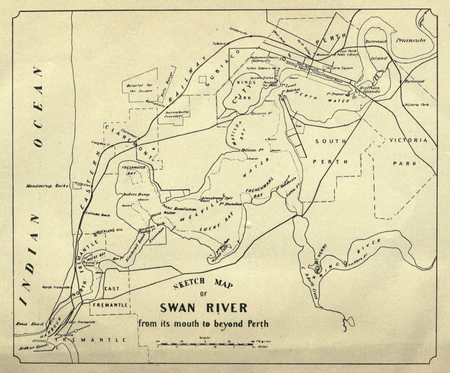The Visit of Charles Fraser to the Swan River in 1827
——THE——
Visit of Charles Fraser
(THE COLONIAL BOTANIST OF NEW SOUTH WALES)
TO THE SWAN RIVER IN 1827, WITH HIS OPINION ON THE
SUITABLENESS OF THE DISTRICT FOR A SETTLEMENT.
Together with
Copious Notes by J. G. Hay.

To which is added
The Journal of H.M.S. "Success"
(Captain James Stirling, R.N.)
ON THE ABOVE OCCASION.
V. K. JONES &, CO. PRINT, PERTH.

PREFACE.
The original papers, now published for the first time in Western Australia, speak for themselves,
The journal of the Clerk of H.M.S. "Success" has never before seen the light of day, and much interesting matter is pleasantly related therein.
Attention may be drawn to one or two items not hitherto known.
The original intention of the expedition was to suggest Buckland Hill as the site for a town for the proposed settlement. This, however, was superseded by Captain Stirling, on his arrival with the first immigrants, in the ship "Parmelia," in June, 1829, by placing the capital, Perth, about twelve miles from the port, at which he settled the town of Fremantle. The elucidation of the naming of Perth after the birthplace of Sir George Murray, the then Secretary of State for the Colonies, in honor of whom also towns in New South Wales, Tasmania, and Canada were named, and the origin of the naming of Mount Eliza after Lady Darling, should set aside many absurd stories for these nomenclatures.
Another fact that is not generally known is that Chenopis atrata (the black Swan of Australia), which was first observed by Vlaming, at the river he named after the bird, on the 5th of January, 1697, was not confined to that portion of Australia, but was once common to the whole southern coast from east to west, as also Tasmania and the islands of Bass' Straits. It is not a true swan, but belongs to an allied genus now, unfortunately, almost annihilated. It has been collected and brought together in numbers to the Swan River at Perth, where it is protected by legislation from being destroyed.
Finally, I have to thank the Department of Lands for facilities given me to search their records, and especially have I to thank Mr Joseph Hope, the Chief Draughtsman, for assistance freely rendered me on this and other occasions.
I have also to express my thanks to Mr. Malcolm A C. Fraser, the Registrar-General, for the loan of some of the Plates used in illustration.
One day, I trust publishing a small history of Western Australia, in the meantime, this little brochure, I hope, may not be unacceptable to some as a first instalment.
![]()
This work is in the public domain in the United States because it was published before January 1, 1930.
The longest-living author of this work died in 1938, so this work is in the public domain in countries and areas where the copyright term is the author's life plus 86 years or less. This work may be in the public domain in countries and areas with longer native copyright terms that apply the rule of the shorter term to foreign works.
![]()
Public domainPublic domainfalsefalse

